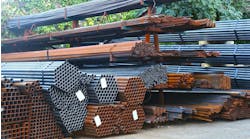Latest from Home
Sponsored
BY ROBERT P. MADER
Of CONTRACTOR’s staff
UPPER MARLBORO, MD. — October was the month for clashing toilet test results. First, Consumer Reports revealed its 1.6-gpf test results in an October issue story headlined, “Successful Water Savers.” Then, on Oct. 28, the National Association of Home Builders Research Center here released its own — and quite different — toilet test results.
The two groups went in opposite directions. Consumer Reports preferred vacuum- or pressure-assisted toilets. Its top toilet was the Briggs Vacuity, followed by similar models from American Standard, Gerber, Crane, Kohler and Mansfield. Vacuum- or pressure-assisted toilets undoubtedly do a fairly good job moving waste down the drain, which is why they are Consumer Reports’ top eight models, but they constitute a small portion of the actual market.
The NAHB Research Center study was commissioned by water utilities in Seattle and Oakland, Calif. The utilities selected the 52 toilets tested, most of which were gravity-flush. The top performers were Toto, Niagara, Mansfield, American Standard, Corona, Crane, Western Pottery and Gerber. Some of the toilets in the Research Center study are vacuum- or pressure-assisted, but the sponsors’ main criterion was that the toilets were widely available and used on the West Coast.
Some toilets, such as the Gerber Ultra, did well on both studies. The Toto Ultramax did well on the Research Center study and not as well in the Consumer Reports study.
But does it really make any difference? Not according to Bob Hill, the Research Center’s director of laboratory services.
“The industry has made significant progress since 1.6 toilets were first introduced,” Hill said. “We did a similar study three years ago and my impression is that the toilets tested this time did whole lot better than the toilets tested three years ago. And, second, these test results are just one factor when buying a toilet. You have to consider flushing ability, water conservation, style, price and availability in your area.”
While Americans love a Top 10 list, Hill said such rankings have no scientific validity. The Research Center developed its own “flush performance index,” and Hill noted that some readers of the study have tried to make the case that a toilet that finished two-tenths of a point ahead of another is superior. While there is a difference between the top toilets and the ones finishing dead last, “Somebody reading the report can’t put too fine a pencil on it,” he said.
Regardless of how they rated, toilet manufacturers are convinced that their toilets have been thoroughly tested and work well.
Greg Carlson, CEO of Briggs Plumbingware, said he was pleased that his firm’s products tested as well as they did. At the same time, Carlson acknowledged that tests vary and a product that starts with clay will vary. The only thing a manufacturer can do is strive for consistency in its production process and keep its quality control tight, he said.
“Every time they try to rate toilets comparatively, they come up with different conclusions even though they’re testing the same products,” said Pete DeMarco, director of compliance engineering for American Standard. “I know the NAHB guys and I know the guys at the other labs, and they’re all bright engineers. The issue is that it’s deceivingly difficult to try to comparatively rate something as chaotic as a toilet flush with simulated media.”
There are all sorts of tests, he said, from the plastic balls and cylinders of the ANSI/ASME test protocol to floating and sinking sponges, plastic granules and various types of paper. Marker is applied under the rim to see if the bowl is washed. Dye in the water measures dilution with each flush.
All manufacturers test their toilets to failure, although DeMarco noted the toilets are so overloaded that it’s often just an academic exercise.
Toto is the most creative. The company uses bean curd formed into various sizes of simulated excrement, said Marketing Manager Newbold Warden. Bean curd is not satisfactory for a standardized test, he said, because the simulated waste is different every time. Toto, however, supports the Research Center test method that uses floating and sinking sponges as being the most realistic, Warden said.
No matter what’s flushed down them, today’s toilets work much better than those produced in the early 1990s.
American Standard’s DeMarco noted, “The American market has the best flushing toilets of any out there.”

